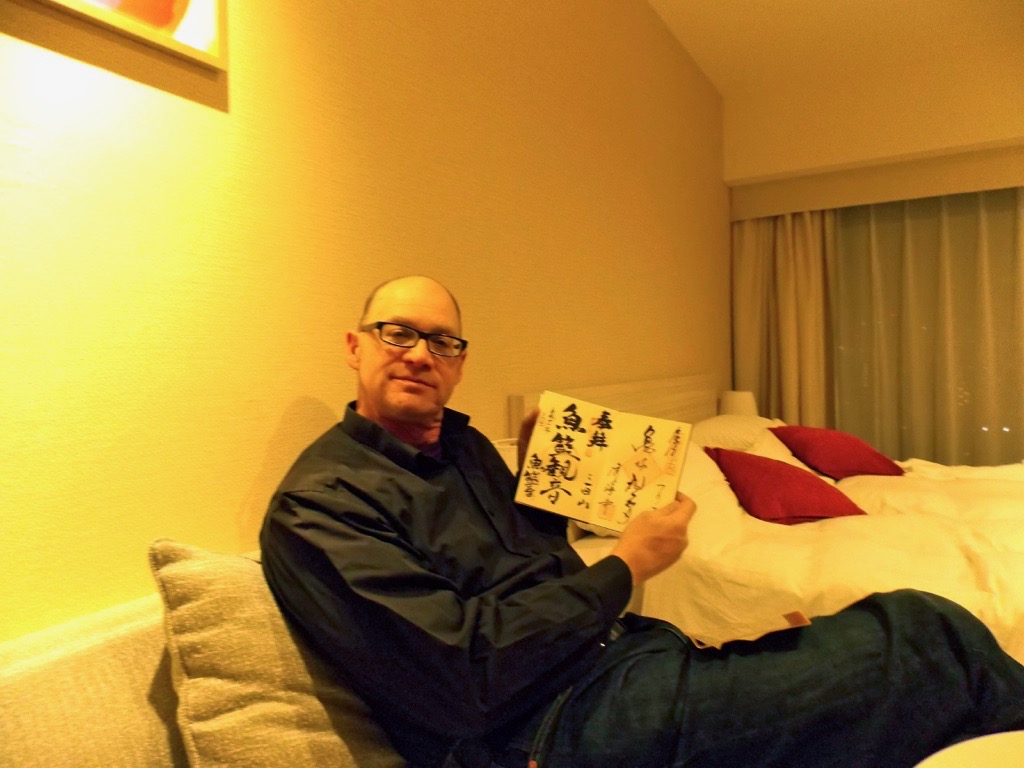
As the cab drops us at the gates of Gokoku-ji, the sun has dipped near the horizon on this 2nd of January. The sky is still blue, though, and the temple bustles with people celebrating New Year. We climb a long staircase and pass through the Furomon Gate. In this magic hour before sunset, the temple grounds are bathed in saffron light.
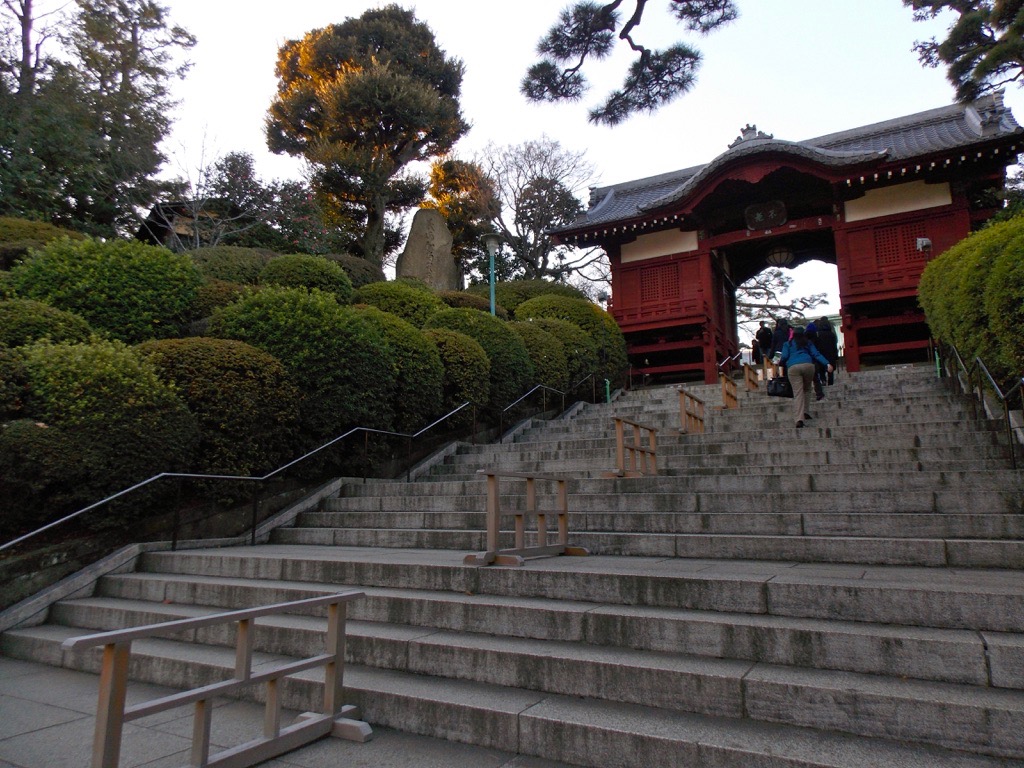
Gokoku-ji is huge and renowned because, unlike most other temples in Tokyo, many structures remain from the Edo period, even some from when the temple was founded. We walk directly to the main Kannon-do, built in 1697. Somehow this wooden hall has survived fires, earthquakes, typhoons, and the Allied bombing of the Second World War.
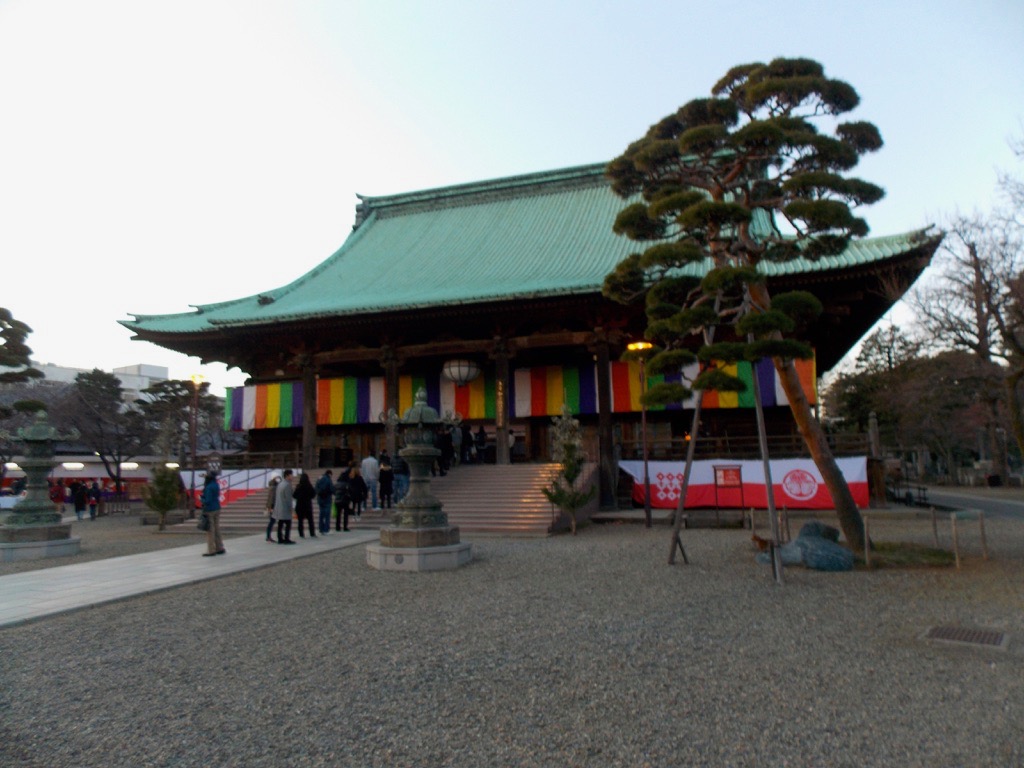
On a terrace below the Kannon-do stands Gokoku-ji’s oldest structure, built in 1691, the Yakushido, dedicated to Yakushi Nyorai, the Medicine Buddha, the doctor who cures suffering by prescribing the medicine of his teachings. The Yakushi cult was most widespread in Japanese Buddhism’s earliest period. Before the altar, Ranjini prays for her father, for our children, and for us to have a long and happy life together.

Gokoku-ji was founded in 1681 by Tokugawa Tsunayoshi, the fifth shogun of the Tokugawa dynasty and the great-grandson of Tokugawa Ieyasu. Just as Denzuin was dedicated to Ieyasu’s mother, Gokoku-ji is dedicated to Tsunayoshi’s mother, Keishōin, one of his father’s concubines. His father, the third Tokugawa shogun, preferred Tsunayoshi’s elder half-brother to succeed him, and so ordered that the precocious child be trained as a scholar instead of a samurai. The elder brother did succeed their father as the fourth shogun, but in 1680 he died and, despite his father’s precautions, Tsunayoshi came to power.
His main adviser was his mother, Keishōin, a deeply religious woman, devoted to Buddhism and Neo-Confucianism. Her influence can be seen behind many reforms of Tsunayoshi’s rule, such as the banning of prostitution. He was a dog lover and is best known for his laws protecting animals, the Edicts on Compassion for Living Things, which earned him the nickname “The dog shogun”. His strict laws protecting animals (a man was executed for wounding a dog) led to packs of strays wandering the streets of Edo, and dog poop and rabies became serious public health issues. The problem was solved by building huge kennels in the suburbs of the city, where over fifty-thousand dogs were fed and cared for at taxpayer’s expense.
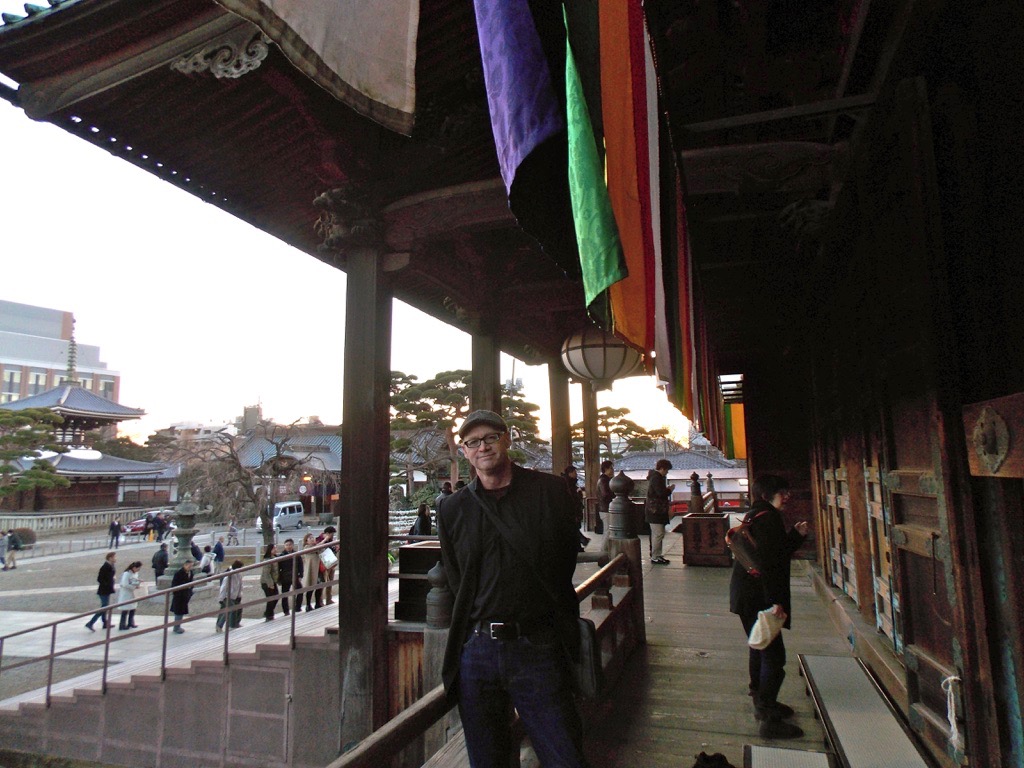
Gokoku-ji is also known for its many tea-houses, but we’ve arrived too late for fancy tea. As we wander the grounds, it grows dark and the crowds thin, but we’re attracted to the booths at the edge of the temple grounds. Some customers try their luck at firing toy rifles at targets in hopes of winning a prize. Besides the carnival games, they are selling noodles, tea and sake, and we’re hungry and tired.
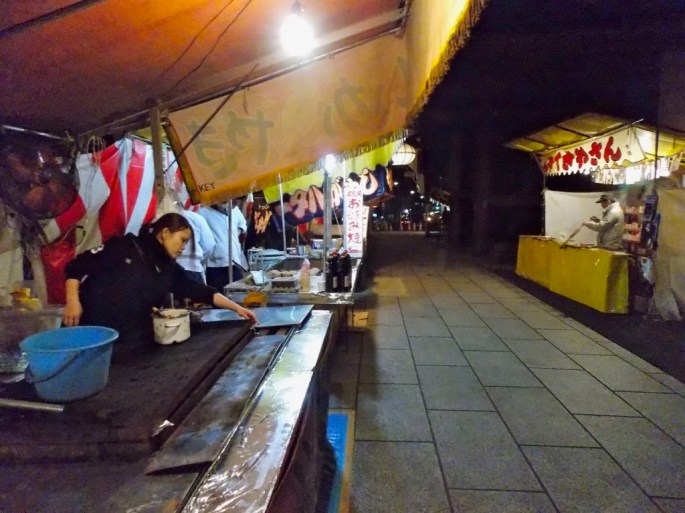
Glad that we don’t have to undergo another frustrating search for a restaurant with vegetarian options, we both order noodles and eat them on plain wooden benches in tents lit by bare bulbs. I study my map and see that Gokokuji Station is right beside the temple. We stroll back out through the Furoman Gate and down the stairs to the darkened street and to the station, where we catch the train back to our Tokyo Stay.
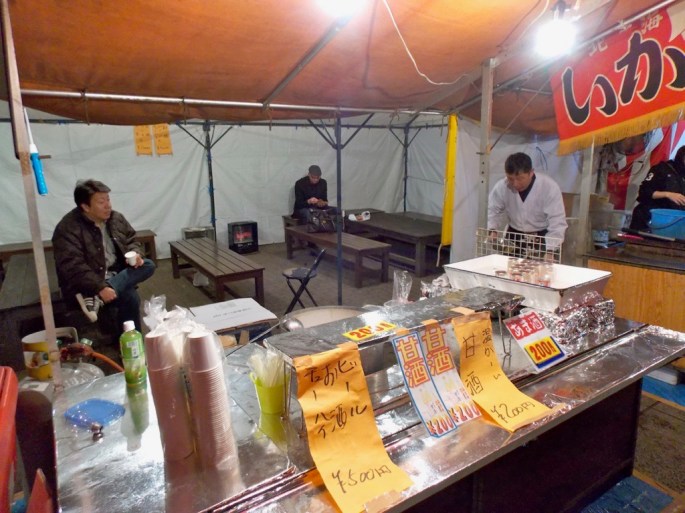
We do our laundry in the machine in our room, elated by our accomplishment: seven temples in one day! Tomorrow we take the Bullet Train to Kyoto, but we plan on rising early and visiting two more temples in the morning before we leave. Discussing our adventure, we eat the biscuits Buddha gave us during our first temple visit today. Such a wonderful day, like so many we’ve already spent together. What if we were to write it down, this random perfect day, this entire pilgrimage, captured in our two voices like a bee trapped in golden amber? We go to bed happy.
